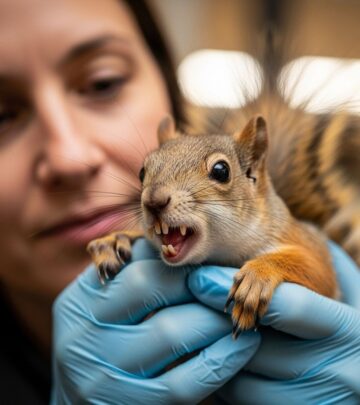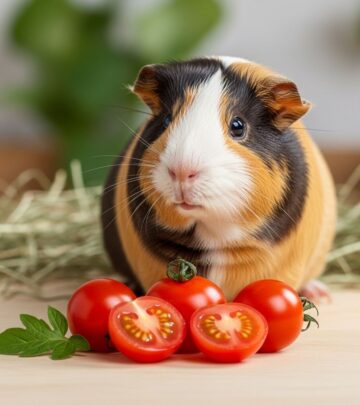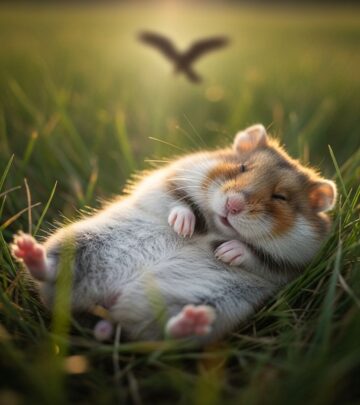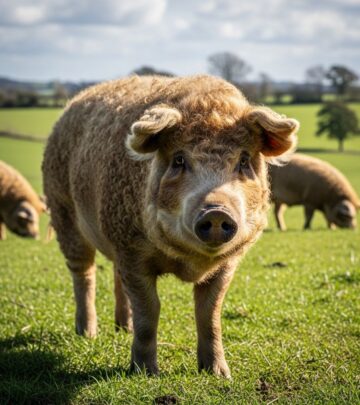Angora Rabbit Care: 4 Essential Steps For A Happy, Healthy Pet
Discover the ancient, fluffy Angora rabbit breed - from their luxurious wool to their special care requirements
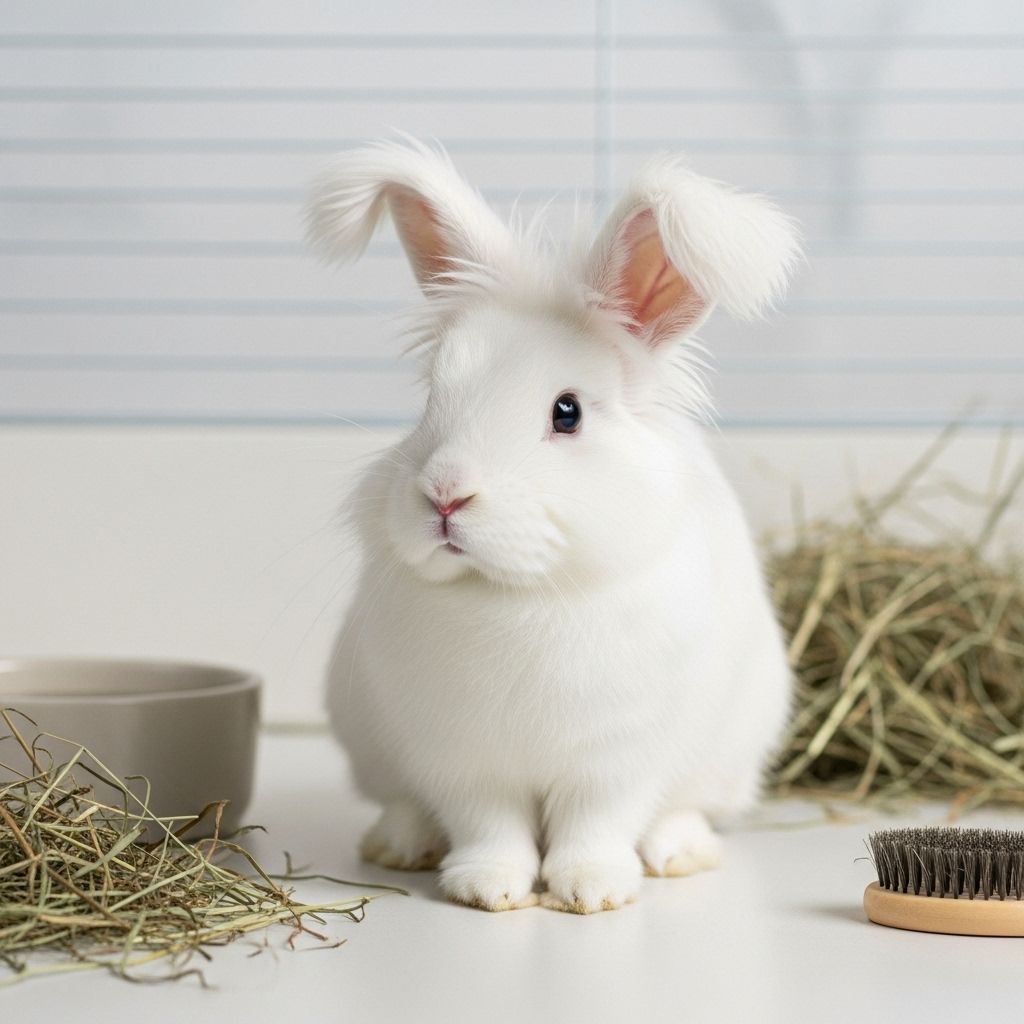
Image: HearthJunction Design Team
Angora Rabbit: History and Origins
Angora rabbits stand as one of the oldest domesticated rabbit breeds in the world. While many believe that the breed originated in Turkey in the 1700s (specifically from a Turkish port called Angora, now modern-day Ankara), historical evidence suggests their existence dates back much further – possibly to the time of the Romans, at least 100 B.C.E. These fluffy creatures gained tremendous popularity when they were introduced to France in 1723, where they quickly became the favored pet of Queen Marie Antoinette.
The breed’s journey to the United States began around 1840, and their population saw significant growth during World War II. This growth was largely driven by the high global demand for their luxurious wool, which was valued for its exceptional quality and softness. The Angora rabbit’s distinctive appearance and valuable coat have made it a cherished breed among rabbit enthusiasts, wool producers, and pet owners alike throughout history.
Physical Characteristics
Angora rabbits are immediately recognizable by their most distinctive feature – their extraordinary coat. These rabbits possess a special recessive gene that causes their soft and silky fur to grow at a remarkable rate of approximately one inch every month. Their wool is highly prized for having fewer allergy-causing qualities than other animal wools and features a luxurious texture often compared to cashmere.
Adult Angora rabbits typically weigh between 4-12 pounds, with their size varying significantly depending on the specific variety. The Giant Angora, true to its name, sits at the heavier end of this spectrum. Their average lifespan ranges from five to twelve years, with larger rabbits generally enjoying longer lives than their smaller counterparts.
The wool production capabilities of Angoras are truly impressive. The largest specimens can produce up to 4 pounds of wool annually, making them valuable not just as pets but also for fiber production. Their coats require special attention and care to maintain their quality and prevent matting.
Angora Rabbit Varieties
While there are at least 11 different varieties of Angora rabbits worldwide, the American Rabbit Breeder’s Association (ARBA) officially recognizes four main types. Each type has its own distinctive characteristics and appearance:
English Angora
The English Angora is perhaps the fluffiest of all Angora varieties. They are immediately recognizable by the long fur that grows on their face and ears, giving them an extremely woolly appearance. This variety requires the most intensive grooming due to their propensity for wool blockages. English Angoras tend to be on the smaller side of the Angora spectrum and have a distinctively round, woolly appearance that many find irresistibly cute.
French Angora
French Angoras typically have a larger, more commercial body type compared to English Angoras. They feature a dense undercoat but have clean, hairless faces – a characteristic that makes them somewhat easier to maintain than their English cousins. This variety is known for having a “rollback” coat and can weigh between 7.7-9.9 pounds. Their wool is particularly prized for being lightweight while providing excellent warmth, making it ideal for sweaters, mittens, and baby clothes.
Satin Angora
The Satin Angora gets its name from the distinctive sheen of its coat, which has a silky, lustrous appearance. This glossy quality comes from the unique structure of their fur, which reflects light differently than other Angora varieties. Satin Angoras produce slightly less wool than other types, but the quality of their fiber is often considered superior due to its sheen and softness.
Giant Angora
As the name suggests, the Giant Angora is the largest of the recognized varieties. These impressive rabbits can weigh a minimum of 5.5 kilograms (12 pounds) and can produce an astonishing amount of wool annually – between 2.5 to 4.5 pounds per year. Giant Angoras were developed specifically for commercial wool production and are the only variety of Angora rabbit that is recognized by ARBA to have only one color – ruby-eyed white.
Colors and Patterns
Angora rabbits come in an impressive array of colors and patterns. Depending on the specific variety, Angoras can be found in numerous colors including Black, Blue, Chestnut, Chinchilla, Chocolate, Copper, Fawn, Lilac, Lynx, Opal, Pointed White, Red, Sable, Seal, Tortoiseshell, Blue-Eyed White, and Ruby-Eyed White.
The ARBA recognized types include Agouti, Broken, Pointed White, Self, Shaded, Ticked, and Wide Band patterns. This remarkable diversity in coat coloration adds to the appeal of Angora rabbits as both show animals and pets, allowing owners and breeders to select from a wide range of beautiful appearances.
Temperament and Behavior
Angora rabbits are known for their gentle and docile temperament, making them excellent companions for the right owners. These intelligent and social animals typically form strong bonds with their caretakers. While they generally don’t require as much attention as some other rabbit breeds, they truly flourish with regular interaction and handling.
These rabbits are known to be curious and enjoy exploring their surroundings, though many Angoras tend to prefer lounging to running around. They appreciate toys and new environments to investigate, which helps keep their active minds stimulated. Their even-tempered nature makes them suitable for families, though proper handling is essential.
One important behavioral note is that while Angoras enjoy being cuddled in their owner’s lap, many dislike being picked up and held. When frightened or improperly handled, they can become skittish or even aggressive. Due to the delicate nature of a rabbit’s spine, it’s crucial for Angora owners to learn proper handling techniques to prevent injury to these gentle creatures.
Care Requirements
Housing
Angora rabbits require spacious living quarters that allow them to move comfortably while keeping their luxurious coat clean. Their hutch or enclosure should be large enough for them to hop around, stand up on their hind legs, and stretch out completely. The flooring should be solid rather than wire to prevent their feet from developing painful sores (a condition known as sore hocks).
Temperature control is particularly important for Angora rabbits. Their thick coats make them susceptible to overheating in warm weather, so their living area should be well-ventilated and kept cool during summer months. Conversely, their enclosure should be draft-free during colder seasons to prevent respiratory issues.
Diet and Nutrition
A proper diet is essential for maintaining the health of an Angora rabbit, particularly for supporting their constant fur growth. Their nutrition should consist primarily of unlimited high-quality hay (such as timothy hay), which provides the fiber necessary for proper digestion and helps wear down their continuously growing teeth.
In addition to hay, Angoras should receive a measured amount of specially formulated rabbit pellets that contain essential vitamins and minerals. Fresh vegetables should make up about 10-15% of their diet, with favorites including leafy greens, carrots, bell peppers, and herbs like cilantro and basil. Fresh, clean water should always be available, preferably in a heavy ceramic bowl that won’t tip over or a bottle with a sipper tube.
Grooming Requirements
The most distinctive aspect of caring for Angora rabbits is undoubtedly their intensive grooming needs. Their continuously growing wool requires regular attention to prevent matting, which can lead to serious health issues. Most Angora rabbits need to be thoroughly brushed 1-3 times per week at minimum, with some varieties requiring daily attention.
Grooming sessions should involve carefully removing loose fur with appropriate brushes and combs designed for long-haired rabbits. Special attention should be paid to areas prone to matting, such as behind the ears, under the chin, and around the hindquarters. Many Angora owners collect the shed wool during grooming sessions for spinning into yarn.
Beyond regular brushing, Angoras require periodic trimming or shearing of their coat. This is typically done every 90 days when the wool reaches optimal length for harvesting. Proper grooming tools, patience, and gentle handling are essential for making the grooming experience positive for both rabbit and owner.
Health Considerations
While Angora rabbits are generally hardy animals, their luxurious coats make them susceptible to certain health issues that owners should monitor closely. Wool block, a potentially fatal condition where ingested fur accumulates in the digestive tract, is perhaps the most significant concern. Regular grooming helps minimize the amount of fur the rabbit ingests during self-grooming.
Like other rabbits, Angoras can develop dental problems if their diet doesn’t provide adequate wear for their continuously growing teeth. They’re also susceptible to overheating in warm weather due to their thick coats. Regular health check-ups with a rabbit-savvy veterinarian are essential for maintaining their wellbeing.
Are Angora Rabbits Good Pets?
Angora rabbits can make wonderful companions for the right owners, but they’re not suitable for everyone. Their extraordinary grooming requirements demand a significant time commitment that potential owners must be prepared for. If neglected, their coats can quickly become matted, leading to discomfort and health problems.
These rabbits are best suited for individuals or families who have the time, patience, and experience to attend to their specific needs. Due to their grooming demands, they may not be ideal for very busy households or first-time rabbit owners. Children can help with Angora care under supervision, but the primary caretaker should be an adult committed to the rabbit’s daily needs.
For those willing to invest the necessary time and effort, Angora rabbits reward their owners with gentle companionship and, for those interested in fiber arts, beautiful wool for spinning and crafting.
Frequently Asked Questions (FAQs)
Q: How much wool can an Angora rabbit produce?
A: Depending on the size and variety, Angora rabbits can produce between 1-4 pounds of wool annually. Giant Angoras are the most productive, yielding between 2.5-4.5 pounds of wool per year.
Q: How often do Angora rabbits need grooming?
A: Most Angora rabbits require brushing 1-3 times weekly at minimum, with some varieties needing daily attention. Additionally, their wool typically needs harvesting every 90 days through trimming or shearing.
Q: What’s the lifespan of an Angora rabbit?
A: Angora rabbits typically live between 5-12 years, with larger varieties generally living longer than smaller ones when properly cared for.
Q: Are Angora rabbits suitable for first-time rabbit owners?
A: Due to their intensive grooming requirements, Angora rabbits are generally not recommended for first-time rabbit owners. They’re better suited for people with previous rabbit experience who understand the commitment involved.
Q: Do Angora rabbits make good pets for children?
A: While Angoras have gentle temperaments, their specialized care needs mean that an adult should be the primary caretaker. Children can certainly help with and enjoy Angoras under supervision, but these rabbits aren’t independent pets for young children.
Q: What makes Angora wool special?
A: Angora wool is prized for its exceptional softness, silky texture, and warmth. It has fewer allergy-causing qualities than many other animal wools and is often compared to cashmere in its luxurious feel.
Q: Can Angora rabbits live outdoors?
A: While Angora rabbits can live in outdoor hutches in moderate climates, they’re sensitive to temperature extremes. Their thick coats make them vulnerable to overheating in hot weather, so temperature control is essential for their wellbeing.
References
- https://www.petmd.com/rabbit/breeds/angora-rabbit
- https://www.thesprucepets.com/angora-rabbit-breed-profiles-1835793
- https://alpacameadows.com/what-ive-learned-about-angora-rabbits/
- https://everbreed.com/blog/the-complete-guide-to-angora-rabbits/
- https://homeandroost.co.uk/blogs/rabbits/angora-rabbits
Read full bio of Shinta








